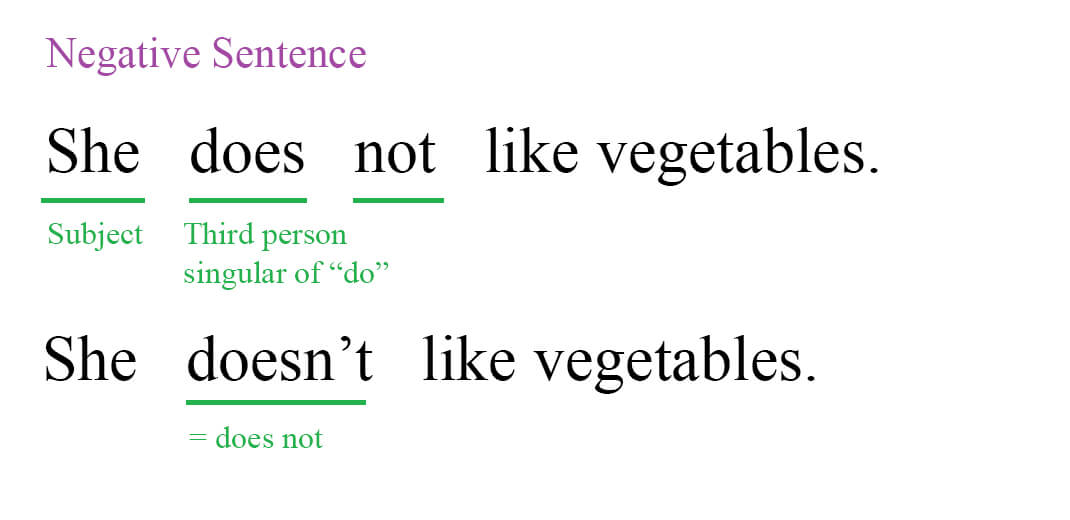Negative Sentence in Simple Present Tense
- To form a negative sentence in English, use 'do not' or 'does not' before the verb.
- For 'I', 'you', 'we', 'they', and many things or people, use "do not" or "don't".
- For 'he', 'she', 'it', or one thing or person, use "does not" or "doesn't".
- The verb that follows 'do not' or 'does not' is always in its base form.
To make a negative sentence in English, we usually use 'do not' or 'does not' before the verb. For example, if the positive sentence is "I like apples”, the negative sentence would be “I do not like apples”.
Do not / Don't
If the subject is "I", "you", "we", "they", or many things or people, put "do not" or "don't" after the subject.
"Don't" is the short form (contraction) of "Do not".
Examples:
-
You don't like apples.
Subject ("You") - don't - verb ("like") - object ("apples")
-
They do not like apples.
Subject ("They") - do not - verb ("like") - object ("apples")
Does not / Doesn't
For third-person singular (he, she, it, one thing or person), we put "does not" or "doesn't" after the subject. The verb must be in base form.

Examples:
-
She doesn't like vegetables.
Subject ("She") - doesn't - verb in base form ("like") - object ("vegetables")
-
This is WRONG: She doesn't likes vegetables.
-
It does not like apples.
Subject ("It") - does not - verb in base form ("like") - object ("apples")
Remember, the verb following 'do not' or 'does not' is always in the base form. As seen in the examples above, even though the subject 'he' usually changes the verb (like to likes), in negatives we keep the base form of the verb (like).
和AI英语老师一起练习这个话题
AI英语老师会教您语法,并以对话的形式和您一起练习。 另外,还有 100 多个有关该主题的练习题来巩固您的理解。
在您的手机或平板电脑上免费试用 ALULA








你对这节课有任何问题吗?请在下面的评论区提问。